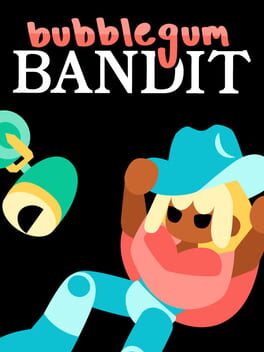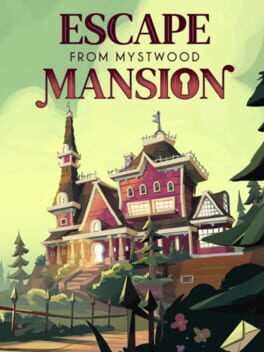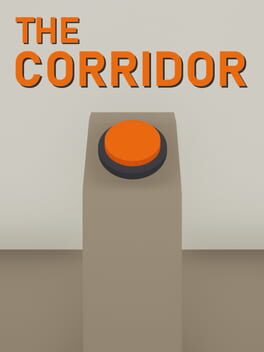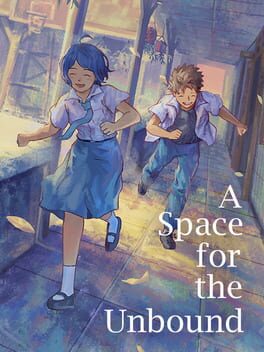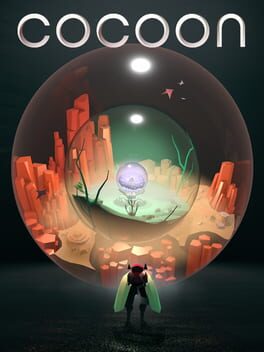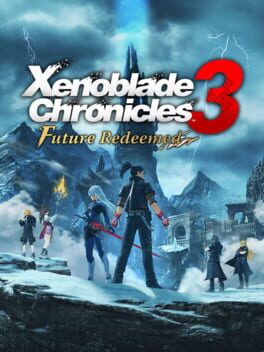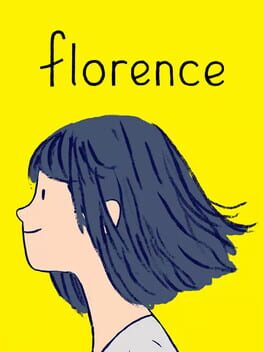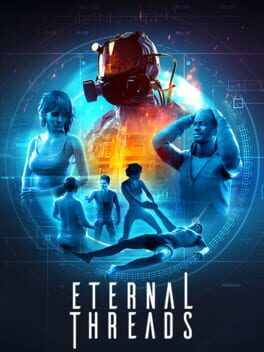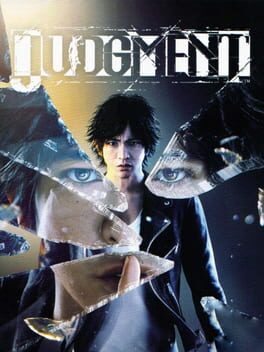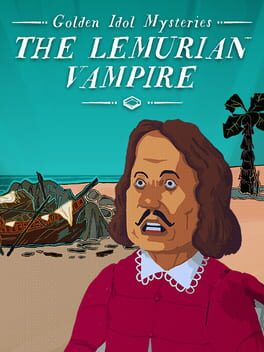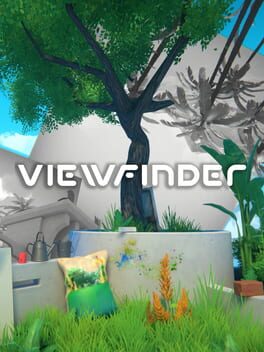pluggedingaming
2022
A good evolution of the Vampire Survivors idea, with a greater emphasis on choosing a loadout and building up skills and builds. I eneded up using Lilith with the bat gun for a significant portion of my way up to the final difficulty level. The game overall is fun, a great podcast/music listening game, but the road to "completing" it is a little repetitive and I wish more elements of each run would change to keep players on their toes. Had fun though and is worth it for fans of the idea.
2023
Bubblegum Bandit is a cute little action platformer where you must infiltrate spaceships and steal the reactor core at the center of each. To complete this task, you have the ability to flip gravity back and forth, while also armed with a bubblegum pistol to stick enemies and objects in place. There are a lot of fun moments that remind me of VVVVVV, but this game is much more bite-sized. I liked the steady introduction of new mechanics and the music and visuals were pretty good. I wish there were more different environments, and some of the controls felt a little unintuitive, but overall, I rescued all the hostages and completed the game.
How do you possibly stand out in an oversaturated genre? Prince of Persia: The Lost Crown, despite its striking change in perspective, had an uphill battle entering one of the most covered subsections of the gaming space in the last few years. Thankfully, Ubisoft has crafted a consistently entertaining and challenging Metroidvania that stands amongst the best of its contemporaries, while not losing the identity of the franchise or forgetting to bring something new to the table.
The Lost Crown opens with an introduction to the Immortals, a band of mercenaries with a host of extraordinary abilities. When they return from a successful mission to discover the Prince has been kidnapped, they venture off to the mysterious Mount Qaf to investigate. You play as Sargon, the scrappy underdog of the group, who finds out things aren't as they appear in the Citadel or within his own compatriates, as he ventures of to find the Prince. The story overall is relatively predictable, but is nice to have something guiding the adventure. There are definitely some fun setpiece moments and The Lost Crown adapts an anime-like aesthetic that really makes the bigger action scenes pop. This exaggerated style carries through to the combat and traversal, which are equally flashy and satisfying.
The world of Mount Qaf is MASSIVE. The Lost Crown boasts a comparatively lengthy runtime for a Metroidvania, with about a dozen unique areas to explore and secrets to find. TLC starts similar to any game of the genre: you start with basic movement and combat abilities and exploring the world helps expand both fighting and exploring capabilities. Exploration is standard Metroidvania fare, but a new excellent idea is Visions, which allow you to place a pin on the map that also screenshots the area. This allows players to recall exactly what caused a roadblock on a particular path and allows you to quickly find it when you have the desired ability. Visions, alongside pins and a reliable map system create a Metroidvania that is a breeze to find every secret for, which is a common complaint I have frequently.
Combat is just as refined, taking cues mostly from games like Guacamelee. You have start attack combos, as well as a ranged weapon you get early on. Collectible amulets add modifiers to your combat style (i.e. More health, less elemental damage) and can be upgraded alongside your weapons. A special move gauge, titled the Athra meter, builds up as you deal and take damage, allowing you to execute a massive attack or buff when you fill it up. My strategy was to equip Amulets to build the Athra meter up quickly and then unleash the attacks upon any enemy who dared test Sargon. I loved how gradually the combat blossomed throughout the adventure, and by the conclusion, Sargon is zipping around and becomes an extremely mobile character. This doesn't come at the cost of difficulty though, as the enemies get harder and more unpredictable the deeper you go. I was still taking significant damage late in the game, despite having the ability to cross ravines of spikes with no issues.
The platforming challenges in TLC are no joke. Some of the side paths and hidden areas can get really challenging, but the main path stays relatively achievable to not alienate players who may want to just see the ending. Ubisoft has added a bunch of really accessible options as well as modifiers to allow for anyone to enjoy the game (even difficulty settings, which I feel is a rare occurance in the genre). I have only a few minor gripes. The Dimension Shift ability is tied to clicking in the stick, and with how you need to use it, that input is awkward every time. I also ran into a few technical issues, from a few moments of the game catching up to itself and the game crashing once, forcing me to redo a few minutes of progress. TLC mitigates as much of this as possible, but it's not perfect. That said, I played the Switch version and it is a truly excellent way to play. Not only do you have the option of handheld, but the Metroidvania genre feels at home on the Switch hardware and the game never suffered in performance to accommodate the older hardware. I really liked my time with The Lost Crown. Despite never playing a Prince of Persia game, I was invested in the characters and would love to see Ubisoft create more AAA Metroidvanias. It's an automatic recommend for any fans of the genre.
The Lost Crown opens with an introduction to the Immortals, a band of mercenaries with a host of extraordinary abilities. When they return from a successful mission to discover the Prince has been kidnapped, they venture off to the mysterious Mount Qaf to investigate. You play as Sargon, the scrappy underdog of the group, who finds out things aren't as they appear in the Citadel or within his own compatriates, as he ventures of to find the Prince. The story overall is relatively predictable, but is nice to have something guiding the adventure. There are definitely some fun setpiece moments and The Lost Crown adapts an anime-like aesthetic that really makes the bigger action scenes pop. This exaggerated style carries through to the combat and traversal, which are equally flashy and satisfying.
The world of Mount Qaf is MASSIVE. The Lost Crown boasts a comparatively lengthy runtime for a Metroidvania, with about a dozen unique areas to explore and secrets to find. TLC starts similar to any game of the genre: you start with basic movement and combat abilities and exploring the world helps expand both fighting and exploring capabilities. Exploration is standard Metroidvania fare, but a new excellent idea is Visions, which allow you to place a pin on the map that also screenshots the area. This allows players to recall exactly what caused a roadblock on a particular path and allows you to quickly find it when you have the desired ability. Visions, alongside pins and a reliable map system create a Metroidvania that is a breeze to find every secret for, which is a common complaint I have frequently.
Combat is just as refined, taking cues mostly from games like Guacamelee. You have start attack combos, as well as a ranged weapon you get early on. Collectible amulets add modifiers to your combat style (i.e. More health, less elemental damage) and can be upgraded alongside your weapons. A special move gauge, titled the Athra meter, builds up as you deal and take damage, allowing you to execute a massive attack or buff when you fill it up. My strategy was to equip Amulets to build the Athra meter up quickly and then unleash the attacks upon any enemy who dared test Sargon. I loved how gradually the combat blossomed throughout the adventure, and by the conclusion, Sargon is zipping around and becomes an extremely mobile character. This doesn't come at the cost of difficulty though, as the enemies get harder and more unpredictable the deeper you go. I was still taking significant damage late in the game, despite having the ability to cross ravines of spikes with no issues.
The platforming challenges in TLC are no joke. Some of the side paths and hidden areas can get really challenging, but the main path stays relatively achievable to not alienate players who may want to just see the ending. Ubisoft has added a bunch of really accessible options as well as modifiers to allow for anyone to enjoy the game (even difficulty settings, which I feel is a rare occurance in the genre). I have only a few minor gripes. The Dimension Shift ability is tied to clicking in the stick, and with how you need to use it, that input is awkward every time. I also ran into a few technical issues, from a few moments of the game catching up to itself and the game crashing once, forcing me to redo a few minutes of progress. TLC mitigates as much of this as possible, but it's not perfect. That said, I played the Switch version and it is a truly excellent way to play. Not only do you have the option of handheld, but the Metroidvania genre feels at home on the Switch hardware and the game never suffered in performance to accommodate the older hardware. I really liked my time with The Lost Crown. Despite never playing a Prince of Persia game, I was invested in the characters and would love to see Ubisoft create more AAA Metroidvanias. It's an automatic recommend for any fans of the genre.
Escape from Mystwood Mansion is an excellent collection of puzzles set inside a quirky, secret-laden estate. You play as a mail deliveryperson, ready to hand off a package before you are quickly locked inside and asked to bring said package through a variety of traps and brainteasers. I really liked all of the choices of locations made here, and there were a handful of truly excellent puzzles on display. The game in total runs about 2-3 hours, but it flies by with intuitive game design that smartly clued where to look for the next goal. There are some ideas you may have seen before, especially if you've found yourself inside other escape games, but Mystwood gives you paths that you couldn't do in real-life escape rooms, which I love exploring. Mystwood also has some hidden objectives, which are fun to seek out. One of the game's best incentives is seeing how quickly can you finish a room now that you know what you're looking for. Do you need to input this code? What happens if you use this item on this door? It leads to the ultimate final puzzle which is fun to decipher, but I wish either of the main endings felt grander in scale. Also side note, replaying the game definitely emphasized how slow the walking speed is. It's painfully sluggish at points, especially when you know the answer and just need to get there. That said, for a puzzle enthusiast, Escape from Mystwood Mansion is one of my new favorite experiences in this subgenre and I would love to see more.
2023
I think the Mario RPGs are some of my favorite ways to interact with the universe of the Mushroom Kingdom. I'll play every platformer and kart racer the Italian brothers slap their name on, but there is something so enticing about being able to freely walk around environments in a world that I think modern audiences take for granted. The catalog of Mario is inherently weird, filled with oddball characters that have glimmering personalities even within the most slender dialogue. This all really began with Square and Nintendo's monumental collaboration, Super Mario RPG, a kingdom-spanning adventure that tasks Mario and friends to collect seven magical stars to save his home. The SNES classic set the framework for basically every mainline Mario RPG for the next two decades, and now the Switch remake is here to allow new fans to rexamine the series' origin.
Developer ArtePiazza nutured an art style for its remake that brings the original game as intended into glorious HD. The character models are stumpy and doll-like compared to Mario Wonder or Kart, but fit perfectly within the dioramic worlds the game breathes in. Everything, from the quippy text, to the smallest easter eggs have been preserved to make this update as faithful as possible, but it's not without its enhancements. To start, a completely remade soundtrack has been orchestrated and remixed and that alone is worth diving in for. You can also switch between the original and new sound at will, which was fun to do when I forgot how the SNES handled certain melodies.
Combat is where Mario RPG has seen its biggest improvements. The basics are the same, turn based battles with timed button presses to increase damage on attacks and defend against enemies. You can dodge lots of attacks with good reaction time and can do a "perfect dodge" if you get your timing just right, taking no damage. Successfully attacking or defending an action prompt will fill the new meter at the bottom of the screen. When it hits 100, your party can perform a Triple Move, which changes depending on who your three leads are. This special turn can either do a full heal or a massive attack, and finding the right time to use it is satisfying. The game is notably easy, however. Battles take seconds with regular enemies once you have a full party, and no fights other than the final one really test the player in ways that are truly a gamechanger. One boss prohibits the use of items, attacks, or specials, but it's too simple to use any other method to circumvent the minor restriction. I'm all for easy games, and I usually play on the normal setting, but I surprise even myself when I say I could have used a hard mode option right out of the box.
The generally casual difficulty is only really an issue because I didn't want to become bored of the battles. Mario RPG is one of the most accessible and manageable RPGs you can play at a comfortable 12 hour runtime. The adventure takes you to SO many fun locales and throws ridiculous minigames at you in between the bosses and puzzles. While some of the original's platforming sections and design ideas don't hold up (I'm looking at you 3D Maze), the game is delightful otherwise with so much buried beneath the surface. You can have many meaningful interactions with NPCs after the credits roll, and that's not an easy task.
I don't have the nostalgia for the OG Mario RPG like many do. I played the original only a few years ago, but I still love what this game is. It maybe needed to be a little less beholden to the original game (voice acting or sound design for captioned NPCs during cutscenes would have been nice as opposed to just awkward silence), but Super Mario RPG just adds to the phenomenal celebration of Nintendo's history present on the Switch.
Developer ArtePiazza nutured an art style for its remake that brings the original game as intended into glorious HD. The character models are stumpy and doll-like compared to Mario Wonder or Kart, but fit perfectly within the dioramic worlds the game breathes in. Everything, from the quippy text, to the smallest easter eggs have been preserved to make this update as faithful as possible, but it's not without its enhancements. To start, a completely remade soundtrack has been orchestrated and remixed and that alone is worth diving in for. You can also switch between the original and new sound at will, which was fun to do when I forgot how the SNES handled certain melodies.
Combat is where Mario RPG has seen its biggest improvements. The basics are the same, turn based battles with timed button presses to increase damage on attacks and defend against enemies. You can dodge lots of attacks with good reaction time and can do a "perfect dodge" if you get your timing just right, taking no damage. Successfully attacking or defending an action prompt will fill the new meter at the bottom of the screen. When it hits 100, your party can perform a Triple Move, which changes depending on who your three leads are. This special turn can either do a full heal or a massive attack, and finding the right time to use it is satisfying. The game is notably easy, however. Battles take seconds with regular enemies once you have a full party, and no fights other than the final one really test the player in ways that are truly a gamechanger. One boss prohibits the use of items, attacks, or specials, but it's too simple to use any other method to circumvent the minor restriction. I'm all for easy games, and I usually play on the normal setting, but I surprise even myself when I say I could have used a hard mode option right out of the box.
The generally casual difficulty is only really an issue because I didn't want to become bored of the battles. Mario RPG is one of the most accessible and manageable RPGs you can play at a comfortable 12 hour runtime. The adventure takes you to SO many fun locales and throws ridiculous minigames at you in between the bosses and puzzles. While some of the original's platforming sections and design ideas don't hold up (I'm looking at you 3D Maze), the game is delightful otherwise with so much buried beneath the surface. You can have many meaningful interactions with NPCs after the credits roll, and that's not an easy task.
I don't have the nostalgia for the OG Mario RPG like many do. I played the original only a few years ago, but I still love what this game is. It maybe needed to be a little less beholden to the original game (voice acting or sound design for captioned NPCs during cutscenes would have been nice as opposed to just awkward silence), but Super Mario RPG just adds to the phenomenal celebration of Nintendo's history present on the Switch.
2020
Taking cues from decades of their greatest hits, Nintendo returns to the world of 2D Mario platformers with Super Mario Bros. Wonder. Traditional in structure, but transformative in every other way, Mario has never felt more like the trendsetter.
This time, Peach has not been kidnapped, but instead the castle itself of the neighboring Flower Kingdom. With no victims, the entire cast of the Mario party is available to play from old standbys like the Brothers and Toads to newer faces like Daisy and Toadette. All characters control and handle the same, but it allows you to play the game as whoever you'd like with no fear of missing out.
Mario Wonder follows most closely with the New Super Mario franchise. Every level is a 2D set of platforms with a flagpole at the end and 3 hidden coins to find. This time, the coins are part of a new purple-coin currency which can be found in smaller doses throughout the levels. These coins are used exclusively in the many shops scattered around the Flower Kingdom to purchase badges and standees. Badges are Wonder's newest core addition, which gives you one superpower move, like a floating high jump or an extra spin to more unconventional changeups like a grappling hook or a Celeste-like wall grab. Swapping between badges to fit the right job is a satisfying level of variety, and the fact that all badges work with every level is impressive.
Wonder's other big feature is the titular Wonder effect. By finding a Wonder Flower hidden or not-so-hidden, you trigger a wacky flip on the level, like changing you into some new creature, switching the perspective, or pitting you against a rampaging enemy. Levels surprise constantly with new and funny ideas that make stages visually striking and break up the A+ standard platforming.
The Flower Kingdom is the hub for all of the incredible worlds you can explore. While some areas are linear, others open up and allow you to tackle stages as you see fit. Hidden stages and secret exits further the worldbuilding on top of story jusitification for traveling each separate world. It all coalesces to create a vibrant backdrop that is similar to the highlights of Mario's RPG career.
Wonder can be enjoyed solo, but also has local and online multiplayer. Local multiplayer is just as you expect, up to 4 players can create chaos and mad dash to the end of the level. Online is more interesting: you play solo in your own game with ghosts of other players living in the level shadowing around you. Friendly players can drop standees which function as respawn points and you can interact with these players by liking them and emoting. It's a minimal setup, but works really well if you want to tackle the adventure with others. The best element is you don't have to be in the same level as your friends, so you can just be existing in the world and catch your friends when you match on the same stage.
Mario Wonder is the new standard for 2D platformers. The game is approachable, but knows when to bring a formidable challenge. The music is fantastic, boasting a confident new set of catchy athletic themes and underground bops. Finishing the game is a breeze, but there are enough collectibles and stages to keep you busy for several hours after defeating Bowser. It's an achievement and easily follows Nintendo's hot streak of excellent first-party Switch must-haves.
This time, Peach has not been kidnapped, but instead the castle itself of the neighboring Flower Kingdom. With no victims, the entire cast of the Mario party is available to play from old standbys like the Brothers and Toads to newer faces like Daisy and Toadette. All characters control and handle the same, but it allows you to play the game as whoever you'd like with no fear of missing out.
Mario Wonder follows most closely with the New Super Mario franchise. Every level is a 2D set of platforms with a flagpole at the end and 3 hidden coins to find. This time, the coins are part of a new purple-coin currency which can be found in smaller doses throughout the levels. These coins are used exclusively in the many shops scattered around the Flower Kingdom to purchase badges and standees. Badges are Wonder's newest core addition, which gives you one superpower move, like a floating high jump or an extra spin to more unconventional changeups like a grappling hook or a Celeste-like wall grab. Swapping between badges to fit the right job is a satisfying level of variety, and the fact that all badges work with every level is impressive.
Wonder's other big feature is the titular Wonder effect. By finding a Wonder Flower hidden or not-so-hidden, you trigger a wacky flip on the level, like changing you into some new creature, switching the perspective, or pitting you against a rampaging enemy. Levels surprise constantly with new and funny ideas that make stages visually striking and break up the A+ standard platforming.
The Flower Kingdom is the hub for all of the incredible worlds you can explore. While some areas are linear, others open up and allow you to tackle stages as you see fit. Hidden stages and secret exits further the worldbuilding on top of story jusitification for traveling each separate world. It all coalesces to create a vibrant backdrop that is similar to the highlights of Mario's RPG career.
Wonder can be enjoyed solo, but also has local and online multiplayer. Local multiplayer is just as you expect, up to 4 players can create chaos and mad dash to the end of the level. Online is more interesting: you play solo in your own game with ghosts of other players living in the level shadowing around you. Friendly players can drop standees which function as respawn points and you can interact with these players by liking them and emoting. It's a minimal setup, but works really well if you want to tackle the adventure with others. The best element is you don't have to be in the same level as your friends, so you can just be existing in the world and catch your friends when you match on the same stage.
Mario Wonder is the new standard for 2D platformers. The game is approachable, but knows when to bring a formidable challenge. The music is fantastic, boasting a confident new set of catchy athletic themes and underground bops. Finishing the game is a breeze, but there are enough collectibles and stages to keep you busy for several hours after defeating Bowser. It's an achievement and easily follows Nintendo's hot streak of excellent first-party Switch must-haves.
A Space for the Unbound opens with a fairytale, one about friendship, loss, and self-acceptance that quickly frames a big-brother relationship between small town teenager Atma and budding storyteller Nirmala. Soon, Atma is thrust out of his routine and into a dream-induced series of surreal breaks in reality, forcing him to find the truth about the many people in his quaint waterfront city and his supposed girlfriend Raya. A Space for the Unbound spares no time creating a suspenseful mystery adventure, but paces its 11 hour runtime with surprisingly emotional and complex beats that tell a larger narrative that culminates in one of the more subtle powerhouses of 2023.
Mainly, A Space for the Unbound takes the form of a traditional point and click adventure game, running around the small, but dense town in order to pick up various items and clues to progress your investigation into the truth behind strange events. Apart from the standard dialogue and item interactions, Atma can use an ability called Spacedive, which allows him to inhabit the subconscious mind of its target and change their heart not unlike the Persona series. In contrast to the charming tight-knit community of the town, Spacedives present a more raw and unhinged interpretation of the psyche of your neighbors and enemies. Many of the game's most inventive ideas are explored within the depths of the mind and Atma as a vessel for change transforms him into an engaging protagonist, especially as he begins to consider if changing the desires of those around him is manipulative and wrong. The entire game wrestles with difficult moral dillemmas and despite a seemingly singular ending, the game give you the shadow of choice and agency.
One of the most staggering elements of A Space for the Unbound is in its presentation; a gorgeous rendition of 1980s Indonesia portrayed in a variety of pixel art setpieces and sonic landscapes. The soundtrack is an absolute standout, with incredible range from catchy earworms to heart-wrenching supporting pieces to the game's heavier moments. The dialogue is a masterclass in realistic conversation, while not losing some goofy and downright hilarious beats of writing (a standout is a quiz-obsessed trio of fellow students). The only exception to the game's flawless exterior is a lack of voice acting, which in my opinion could have been the setup to one of the most incredible performances in games.
A Space for the Unbound is not a game I really want to talk much about in premise. It's much more worth taking it all in on blind faith and discovering the charm on your own terms. Whether you fall in love with the charming cast or just like one of the many side activities like collecting bottle caps or petting every cat, there is a lot to love with this game, and it's something you need to check off your bucket list.
Mainly, A Space for the Unbound takes the form of a traditional point and click adventure game, running around the small, but dense town in order to pick up various items and clues to progress your investigation into the truth behind strange events. Apart from the standard dialogue and item interactions, Atma can use an ability called Spacedive, which allows him to inhabit the subconscious mind of its target and change their heart not unlike the Persona series. In contrast to the charming tight-knit community of the town, Spacedives present a more raw and unhinged interpretation of the psyche of your neighbors and enemies. Many of the game's most inventive ideas are explored within the depths of the mind and Atma as a vessel for change transforms him into an engaging protagonist, especially as he begins to consider if changing the desires of those around him is manipulative and wrong. The entire game wrestles with difficult moral dillemmas and despite a seemingly singular ending, the game give you the shadow of choice and agency.
One of the most staggering elements of A Space for the Unbound is in its presentation; a gorgeous rendition of 1980s Indonesia portrayed in a variety of pixel art setpieces and sonic landscapes. The soundtrack is an absolute standout, with incredible range from catchy earworms to heart-wrenching supporting pieces to the game's heavier moments. The dialogue is a masterclass in realistic conversation, while not losing some goofy and downright hilarious beats of writing (a standout is a quiz-obsessed trio of fellow students). The only exception to the game's flawless exterior is a lack of voice acting, which in my opinion could have been the setup to one of the most incredible performances in games.
A Space for the Unbound is not a game I really want to talk much about in premise. It's much more worth taking it all in on blind faith and discovering the charm on your own terms. Whether you fall in love with the charming cast or just like one of the many side activities like collecting bottle caps or petting every cat, there is a lot to love with this game, and it's something you need to check off your bucket list.
2023
A small bug-like creature emerges from an alien cocoon, stuck on a desert cliffside. Foreign technology scatters around the wasteland, and somehow you know how to operate some of the moving parts. Soon, a launchpad-like device catapults you outside of the desert and into another dimension. The desert you just inhabited is an orb you can carry with you. You move forward, deeper into the strange machinations presented by Inside's lead game designer Jeppe Carlsen in his new game Cocoon.
The lineage of Cocoon's developers is very clear in the design. Retaining Inside and Limbo's one-button control setup, the complexities of the puzzles are not restricted by controls or minute decisions, but rather a pure understanding of recursive thinking and testing the limits of the unknown elements you find along the way. Various buttons and switches to a little guiding drone can clear the path ahead. While the puzzles get more and more layered, the game is generally approachable and walks an excellent balance of a-ha moments and temporary roadblocks. There were only 1 or 2 moments that truly stumped me, but time away from the game for a few minutes cleared my thoughts.
Cocoon succeeds in almost every way at providing players with a steady sense of wonder and discovery, while not blowing the game's length out of proportion. While I think some more late game puzzles could have taken some of the large ideas further, Cocoon wants you to see its conclusion rather than be stumped at some point in the journey. Within the 4-5 hour adventure, you may happen upon secrets, but generally the path is linear, and expertly so, removing completed and irrelevant elements to focus players on the current task at hand. On my first playthrough, achievements were bugged, but that issue has since been fixed and it is now easy to tell what you have missed.
In a year with so many massive titles, both in spectacle and in length, Cocoon manages to stand out through its simple, but precise gameplay loop filled with excellent solves and odd worlds to dive in and out of. It is one of the year's best titles and can easily be played in a weekend. Don't skip the newest great puzzle phenomenon.
The lineage of Cocoon's developers is very clear in the design. Retaining Inside and Limbo's one-button control setup, the complexities of the puzzles are not restricted by controls or minute decisions, but rather a pure understanding of recursive thinking and testing the limits of the unknown elements you find along the way. Various buttons and switches to a little guiding drone can clear the path ahead. While the puzzles get more and more layered, the game is generally approachable and walks an excellent balance of a-ha moments and temporary roadblocks. There were only 1 or 2 moments that truly stumped me, but time away from the game for a few minutes cleared my thoughts.
Cocoon succeeds in almost every way at providing players with a steady sense of wonder and discovery, while not blowing the game's length out of proportion. While I think some more late game puzzles could have taken some of the large ideas further, Cocoon wants you to see its conclusion rather than be stumped at some point in the journey. Within the 4-5 hour adventure, you may happen upon secrets, but generally the path is linear, and expertly so, removing completed and irrelevant elements to focus players on the current task at hand. On my first playthrough, achievements were bugged, but that issue has since been fixed and it is now easy to tell what you have missed.
In a year with so many massive titles, both in spectacle and in length, Cocoon manages to stand out through its simple, but precise gameplay loop filled with excellent solves and odd worlds to dive in and out of. It is one of the year's best titles and can easily be played in a weekend. Don't skip the newest great puzzle phenomenon.
Like Future Connected and Torna: The Golden Country before it, Xenoblade Chronicles 3's DLC is a standalone expansion that pulls on new threads in the ever-growing lore of the franchise. In contrast to those adventures; however, Future Redeemed takes a much more fan-service approach to closing out the trilogy, requiring more knowledge of the series and understanding of the character's backgrounds and pivotal story beats. Even still, FR does a good job of catching returning players up to speed, but new players should AT LEAST play the base game of 3 before jumping in to this new journey.
This time around, we follow Matthew, a spunky hotheaded mercenary who is trying to take down Moebius after they burned down his home and killed his family. He is accompanied by A, a mysterious woman with special powers. Soon, he is joined by other new party members, and some delightful returning faces. The heart of FR is in this mashup of personalities, and the writing balances Matthew well with the others, making it more like an ensemble rather than a protagonist and sidekicks dynamic. Coming in at only 20 hours, FR keeps narrative beats and new mechanics at a steady clip, making sure that players never hit the mid-game slump that can arise with the 80-100 hour RPG counterparts. Instead, the more linear structure guides players to the next objective, and while exploration is still a key element of the gameplay, you aren't going 10 hours without seeing the next cutscene.
The core loop of Xenoblade Chronicles 3 stays the same in FR. Each character has a basic auto-attack and Arts that charge special moves as you attack. Arts can combine and make bigger and flashier moves, and finding the balance of when to use certain Arts to combo your enemy is key. The smaller scale means that there aren't a selection of Arts, you use all the ones you get, but the characters are different enough (and you can switch between them at any time) so the combat never gets stale. Ouroboros Combos are replaced by Unity Combos and Chain Attacks return, bringing the entire system back to life. The new additions come in the form of the Affinity Points. Every character has a grid of skills and arts that can be gradually upgraded with points you accrue by doing virtually anything in the game: exploring new areas, fighting certain species, and taking down unique boss monsters. Points come at a steady pace thanks to a steady stream of new enemies and destinations to discover. It's an elegant and simple system that allows the pre-built characters to grow more powerful without needing to worry about digging into the details of specific moves. Accessories can be equipped however, which can drastically customize each member of your party.
After completing the game, there are several post-game bosses which provide extra challenges. Unfortunately, there is no level jumping and there is a strong chance you'll be 40 levels under the maximum by the ending, which means beating the last few obstacles require a decent amount of grinding. I wish there was a better way to take down these superbosses without wasting time raising levels.
Future Redeemed is for the fans that have come this far. While you may have skipped a chapter or two, the game is set up to be the culmination, while also not upstaging the definitive conclusion of XC3. With no cliffhangers or unresolved beats, the future is undetermined for the next entry into Monolith Soft's key franchise, but I can't wait to see what's next.
This time around, we follow Matthew, a spunky hotheaded mercenary who is trying to take down Moebius after they burned down his home and killed his family. He is accompanied by A, a mysterious woman with special powers. Soon, he is joined by other new party members, and some delightful returning faces. The heart of FR is in this mashup of personalities, and the writing balances Matthew well with the others, making it more like an ensemble rather than a protagonist and sidekicks dynamic. Coming in at only 20 hours, FR keeps narrative beats and new mechanics at a steady clip, making sure that players never hit the mid-game slump that can arise with the 80-100 hour RPG counterparts. Instead, the more linear structure guides players to the next objective, and while exploration is still a key element of the gameplay, you aren't going 10 hours without seeing the next cutscene.
The core loop of Xenoblade Chronicles 3 stays the same in FR. Each character has a basic auto-attack and Arts that charge special moves as you attack. Arts can combine and make bigger and flashier moves, and finding the balance of when to use certain Arts to combo your enemy is key. The smaller scale means that there aren't a selection of Arts, you use all the ones you get, but the characters are different enough (and you can switch between them at any time) so the combat never gets stale. Ouroboros Combos are replaced by Unity Combos and Chain Attacks return, bringing the entire system back to life. The new additions come in the form of the Affinity Points. Every character has a grid of skills and arts that can be gradually upgraded with points you accrue by doing virtually anything in the game: exploring new areas, fighting certain species, and taking down unique boss monsters. Points come at a steady pace thanks to a steady stream of new enemies and destinations to discover. It's an elegant and simple system that allows the pre-built characters to grow more powerful without needing to worry about digging into the details of specific moves. Accessories can be equipped however, which can drastically customize each member of your party.
After completing the game, there are several post-game bosses which provide extra challenges. Unfortunately, there is no level jumping and there is a strong chance you'll be 40 levels under the maximum by the ending, which means beating the last few obstacles require a decent amount of grinding. I wish there was a better way to take down these superbosses without wasting time raising levels.
Future Redeemed is for the fans that have come this far. While you may have skipped a chapter or two, the game is set up to be the culmination, while also not upstaging the definitive conclusion of XC3. With no cliffhangers or unresolved beats, the future is undetermined for the next entry into Monolith Soft's key franchise, but I can't wait to see what's next.
2018
2022
Coming off of the success of non-linear puzzle/detective games like Return of the Obra Dinn and Outer WIlds, developer Cosmonaut tries their hand at a modern-day web of deductions with their game Eternal Threads. Set inside a British house shared by six people, you are a time traveler named Forty-Three tasked with saving these six from a house fire that will take all of their lives. To do this, you must manipulate a variety of major and minor choices in their lives over the previous week, creating subtle rifts in spacetime and influencing them all to save themselves by the time the fire arrives. It's an excellent premise that is immediately interesting and slightly unnerving. The entire 8 hours spent in Eternal Threads keeps you in its contained domestic setting, slowly unlocking doors and secrets as you learn more about the house and the people inside of it. Right at the top of the game, you are given a device that can visit many events that lead to the current timeline, which you can tackle in any order. I chose to see events mostly in chronological order, but there's nothing stopping you from jumping ahead to see the fates of the residents change based on your actions. Once you choose an event you want to watch, you must find its location in the house and then watch the scene play out. In some events, there is a binary decision which can alter the timeline, like choosing to drink or not, telling someone a secret, or choosing how to spend a morning. One of the most fascinating elements of the game is trying to deduce how certain choices will lead to a better or worse outcome and how far do the choices allow for new opportunities. Besides the choices, there isn't much interaction with the characters or the world. Your character is viewing everything through holograms, so you aren't directly influencing the characters, just the choices they make. Ostensibly, the game is just watching over a hundred scenes and picking which decisions carry you forward. This lack of tactile interaction would be fine if not for Eternal Thread's awful UI. The menu you use to select events is laid out so you can easily see the events on the timeline in order, with potential events found on alternate paths blocked out. You can easily change decisions without having to re-view the scene, but there is no menu or tracker of what decisions you've made, so skimming through the massive timeline is cumbersome. It's all too easy to forget which decisions you've left active also, especially if you return to the game for another session. Thankfully, the writing overall is pretty good with some standout moments between characters. Vocal performances are hit and miss, but generally the scenes aren't boring if there are multiple people in them. All of this concludes in an ending that is wildly unsatisfactory, even when achieving the best possible outcome. The game has some truly incredible revelations hanging on its outer edges, but never tries to find a payoff or a valid reason for it all to be there, and instead opts for a cliffhanger that feels out of place and unearned for the stakes previously presented. I was really enjoying the last few hours of Eternal Threads and the actual path to the end completely deflated all desire to 100% complete every scene and collectible. I wish I had more positives to give this game, For 7 of the 8 hours played, I was having a fantastic time, but unfortunately, this genre rides upon how it puts the pieces together, but currently those pieces are from two completely different jigsaw puzzles. I cannot fully recommend Eternal Threads, but lightly suggest trying it out if you like general drama or if you don't mind following through to the end.
2018
Let's lay out the facts. A long-running franchise about the gangster-run district of Kamurocho turns its attention to another hero in its alleyways, Takayuki Yagami, a disgraced lawyer turned private detective. Three years into his career change, he is tasked with solving a series of murders of yakuza members found with their eyes gouged out. Amongst the threats of harm and hostility, Yagami and his cohorts must excavate the truth from wherever they can find it. Judgement takes its time doling out its story across the 40+ hour adventure, but lands on a satisfying and complex detective mystery, even if the ride isn't always the smoothest.
If you are familiar with the Yakuza games, Judgement will feel in line with its predecessors. Primarily, you are dropped in the urban nightlife-centric Kamurocho, running through crowds of pedestrians and fighting groups of disgruntled foes, from thugs to yakuza to serial perverts. Combat is mostly a button masher, with some combos and special moves to switch up your flow. Yagami is able to freely swap between the group-focused Crane Style and the 1v1 Tiger Style at will to dispatch any foe that stands in his way. You can also pick up any stray item, from bikes to traffic cones, to beat the living daylights out of attackers, which is always over the top and satisfying. A new mechanic is introduced with more difficult foes, who may deal Mortal Wounds, which reduce your maximum health with simple recovery items not able to fully heal. It's a nice addition that adds more risk and danger to the otherwise simple fighting.
The main draw of Judgement is running around and exploring some of the many activities you can do, like hitting the arcade, racing drones, and eating at one of the many restaurants. Through your adventure, you may meet potential friends. If you help the friend out, your city reputation increases, and some friends may even help you in battle. You may also stumble upon a host of side cases for Yagami's detective skills, which tasks you with solving a bunch of citizen's issues. Both cases and friends are gradually introduced throughout the story via the map or interactions to find in a few key locations, always prompting you to spin the block and find new stories. The interactions in both are usually more lighthearted and provide not only a great balance with the heavy main story, but flesh out Yagami as a character and prove his skills as a fledgling detective.
Your detective skills are put to the test in a few ways throughout the game. A frequent occurance is tailing a target, which just requires staying out of sight and hiding when prompted. These segments are always a little too long and become a little annoying due to their frequency. Other minigames like spotting a suspect with your camera, lockpicking, and foot chases are much more fun and provide a light tension through the generally massive amount of dialogue. Thankfully, Judgement has a fully voiced English translation, and that went a long way into my being interested and engaged enough to finish the game. The music also wedges its way into your brain and Judgement became a vibe that I was thinking about a lot when I had to take time away. The game breaks up into several TV episode-like chapters, and that became a great structure for the story and tackling the game over the last month or so.
Like with many open-world, long titles, Judgement suffers from just too much sometimes. Tailing sequences, as mentioned before, are too often and too long and many story beats require you to run back and forth through the city with no real efficient way other than running, which puts you at risk for the random encounter combat. In trying to see through all side cases, the game also gates the final few missions behind an extensive collectible hunt, an exhaustive set of minigame challenges, and forces you to win at mahjong several times (which I still have not been able to do). I wish the game kept some of the more optional activities out of the completion progress of the game, and I felt cheated after spending an extra dozen hours trying to solve all the cases and get all the friends, just to be stopped by a game of mahjong :(.
In the end, Judgement impressed me. Despite trying other games in the franchise, Judgement is the first one I saw to the end thanks to its likeable cast, interesting mystery, and fun gameplay loops. While it always ran well, the game's pacing and some narrative beats have issues, leading to a more frustrating back half than I would have liked. I don't know if I'll ever have time to play all of these games, but I'm excited to play Lost Judgement and see what's next for Yagami and the crew.
If you are familiar with the Yakuza games, Judgement will feel in line with its predecessors. Primarily, you are dropped in the urban nightlife-centric Kamurocho, running through crowds of pedestrians and fighting groups of disgruntled foes, from thugs to yakuza to serial perverts. Combat is mostly a button masher, with some combos and special moves to switch up your flow. Yagami is able to freely swap between the group-focused Crane Style and the 1v1 Tiger Style at will to dispatch any foe that stands in his way. You can also pick up any stray item, from bikes to traffic cones, to beat the living daylights out of attackers, which is always over the top and satisfying. A new mechanic is introduced with more difficult foes, who may deal Mortal Wounds, which reduce your maximum health with simple recovery items not able to fully heal. It's a nice addition that adds more risk and danger to the otherwise simple fighting.
The main draw of Judgement is running around and exploring some of the many activities you can do, like hitting the arcade, racing drones, and eating at one of the many restaurants. Through your adventure, you may meet potential friends. If you help the friend out, your city reputation increases, and some friends may even help you in battle. You may also stumble upon a host of side cases for Yagami's detective skills, which tasks you with solving a bunch of citizen's issues. Both cases and friends are gradually introduced throughout the story via the map or interactions to find in a few key locations, always prompting you to spin the block and find new stories. The interactions in both are usually more lighthearted and provide not only a great balance with the heavy main story, but flesh out Yagami as a character and prove his skills as a fledgling detective.
Your detective skills are put to the test in a few ways throughout the game. A frequent occurance is tailing a target, which just requires staying out of sight and hiding when prompted. These segments are always a little too long and become a little annoying due to their frequency. Other minigames like spotting a suspect with your camera, lockpicking, and foot chases are much more fun and provide a light tension through the generally massive amount of dialogue. Thankfully, Judgement has a fully voiced English translation, and that went a long way into my being interested and engaged enough to finish the game. The music also wedges its way into your brain and Judgement became a vibe that I was thinking about a lot when I had to take time away. The game breaks up into several TV episode-like chapters, and that became a great structure for the story and tackling the game over the last month or so.
Like with many open-world, long titles, Judgement suffers from just too much sometimes. Tailing sequences, as mentioned before, are too often and too long and many story beats require you to run back and forth through the city with no real efficient way other than running, which puts you at risk for the random encounter combat. In trying to see through all side cases, the game also gates the final few missions behind an extensive collectible hunt, an exhaustive set of minigame challenges, and forces you to win at mahjong several times (which I still have not been able to do). I wish the game kept some of the more optional activities out of the completion progress of the game, and I felt cheated after spending an extra dozen hours trying to solve all the cases and get all the friends, just to be stopped by a game of mahjong :(.
In the end, Judgement impressed me. Despite trying other games in the franchise, Judgement is the first one I saw to the end thanks to its likeable cast, interesting mystery, and fun gameplay loops. While it always ran well, the game's pacing and some narrative beats have issues, leading to a more frustrating back half than I would have liked. I don't know if I'll ever have time to play all of these games, but I'm excited to play Lost Judgement and see what's next for Yagami and the crew.
A welcome surprise, the second and final set of DLC for the detective showpiece The Case of the Golden Idol takes you to the mysterious Monkey Paw Island, where you examine the origins of the Idol's appearance in the western world during the main game. The story follows some of the characters and ideas from the first DLC and is Part 2 of the prequel to the main game. I really loved how much more developer Color Grey Games was able to build out their alternative historical world, and the primary new mechanic here of time-traveling between different periods is a great concept and one I wish was used more often in the main game. Fitting for the finale of the cases, these three new solves are intricate and complex, asking the player to delineate ancient traditions, unseen deceptions, and covert missions all from the consistently grotesque and detailed environments you are thrown into. There isn't as much variety in design here, but this is made up for with the sheer volume of locations you can explore around the island. Unfortunately, like the first DLC, the second of the three cases this time around left me with a feeling of an unearned solution, and I felt that some of the clues didn't entirely give enough information to bring the case all together. There is still a lot to love, but these cases didn't feel as tightly constructed as the main game's. Despite this, the DLC is a worthy and welcome addition to the adventure, and I can't wait to see what this team tackles on their next major project.
2023
What if there isn't just one simple solution? An impossible problem requires an impossible answer.
One glance towards Sad Owl Studio's newest game Viewfinder elicits similar technical confusion and wonder compared to games like Antichamber, Superliminal, and The Witness. Its primary mechanic, reality distorting photographs that can be placed anywhere to create platforms and new environments, is a sight that never grows stale throughout the hours of puzzling the game has to offer. Much of the puzzle work here is extremely unique, tasking players with literally thinking outside of the box in order to power the teleporter out of each level. The game is divided into solitary stages, connected by a hub world. While the hubs don't provide much purpose, it was nice to not be just continuously shoved into the next level. While most of the game skews on the easier side, there are a few legitimately tricky puzzles that required a bit more trial-and-error to figure out. Some puzzles I felt leaned a little too much into "breaking" the level, but that also felt in the spirit of the game's design. Viewfinder has no problem introducing new mechanics right up until the very end, and I wish there was more time to spend with some of these ideas, mixing them with earlier ones, and posing more brutal challenges. By the end, there are a few headscratchers, but nothing that will stump you for very long.
Viewfinder wants you to not only be thinking about its creative challenges, but also thinking about its spaces, its characters, and life outside of the game. Frequently, it poses very pressing questions about the state of our known reality, and there are several shocking moments that elevated the fun, peaceful gameplay into something that carries much more weight than it seems. This is the most successful I've ever seen a puzzle game implement a narrative that actually matches the genre's themes and ideas, and they only get stronger the further you get into the game.
I really enjoyed my time with Viewfinder. The graphics and art design are simple, but pleasing, and SOS has no problem switching it up when you least expect it. The accompanying music has a lower-key ambient feel that stays out of your way, with a few more noticeable tracks entering in the hub world and key story moments. There are also fully voiced characters in phonographs and memories scattered across the levels, and none of this blew me away, but the writing was serviceable enough to keep me interested in hearing everything being said. The story was as surprising as the mechanics, and it only left me wanting more. If you are a fan of any similar titles in the FPS puzzle genre, you are going to need to check this out.
One glance towards Sad Owl Studio's newest game Viewfinder elicits similar technical confusion and wonder compared to games like Antichamber, Superliminal, and The Witness. Its primary mechanic, reality distorting photographs that can be placed anywhere to create platforms and new environments, is a sight that never grows stale throughout the hours of puzzling the game has to offer. Much of the puzzle work here is extremely unique, tasking players with literally thinking outside of the box in order to power the teleporter out of each level. The game is divided into solitary stages, connected by a hub world. While the hubs don't provide much purpose, it was nice to not be just continuously shoved into the next level. While most of the game skews on the easier side, there are a few legitimately tricky puzzles that required a bit more trial-and-error to figure out. Some puzzles I felt leaned a little too much into "breaking" the level, but that also felt in the spirit of the game's design. Viewfinder has no problem introducing new mechanics right up until the very end, and I wish there was more time to spend with some of these ideas, mixing them with earlier ones, and posing more brutal challenges. By the end, there are a few headscratchers, but nothing that will stump you for very long.
Viewfinder wants you to not only be thinking about its creative challenges, but also thinking about its spaces, its characters, and life outside of the game. Frequently, it poses very pressing questions about the state of our known reality, and there are several shocking moments that elevated the fun, peaceful gameplay into something that carries much more weight than it seems. This is the most successful I've ever seen a puzzle game implement a narrative that actually matches the genre's themes and ideas, and they only get stronger the further you get into the game.
I really enjoyed my time with Viewfinder. The graphics and art design are simple, but pleasing, and SOS has no problem switching it up when you least expect it. The accompanying music has a lower-key ambient feel that stays out of your way, with a few more noticeable tracks entering in the hub world and key story moments. There are also fully voiced characters in phonographs and memories scattered across the levels, and none of this blew me away, but the writing was serviceable enough to keep me interested in hearing everything being said. The story was as surprising as the mechanics, and it only left me wanting more. If you are a fan of any similar titles in the FPS puzzle genre, you are going to need to check this out.

